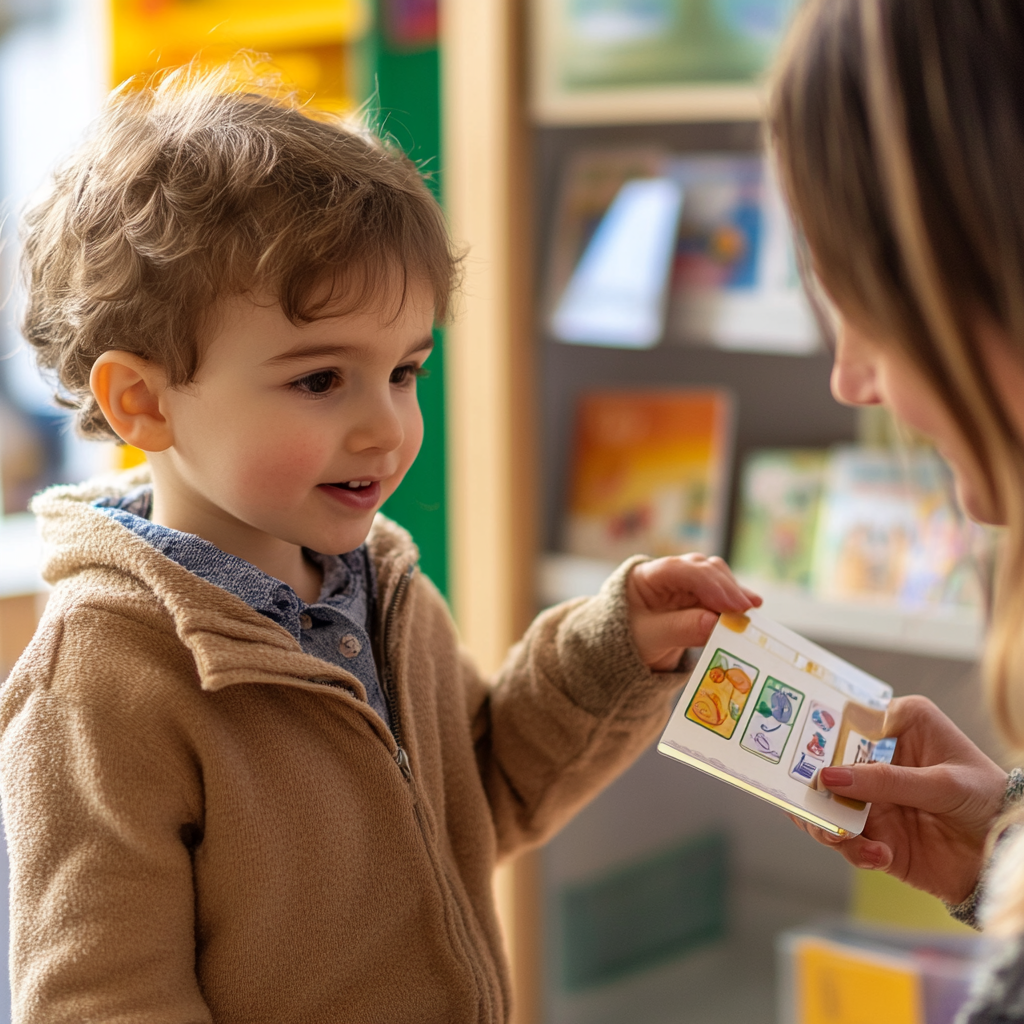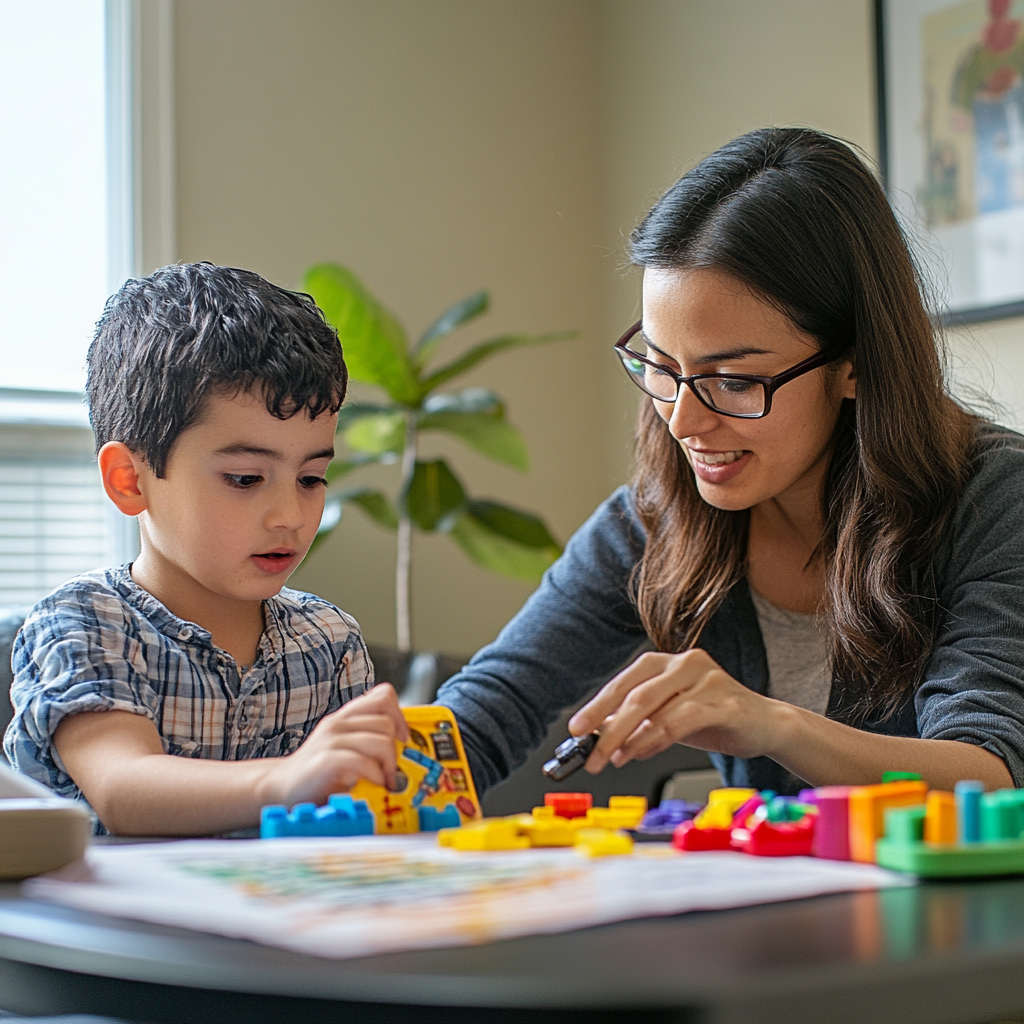Understanding Communication Challenges in Kids with Autism
Children with autism spectrum disorder (ASD) often experience communication challenges that impact their ability to express themselves and engage in social interaction. These difficulties can vary widely, ranging from challenges with spoken language to non-verbal communication difficulties, such as reading facial expressions or understanding body language.
Verbal Communication Issues
Some autistic children may have limited spoken language, struggle with answering questions, or use single words instead of complete sentences. Others may exhibit echolalia, repeating words or phrases without fully understanding their meaning. Verbal children may struggle with pragmatic language skills, making participating effectively in social situations challenging.
Non-Verbal Communication Issues
Nonverbal children may rely on alternative communication methods, such as gestures, visual supports, or assistive technology. They may also have difficulty interpreting non-verbal cues, such as eye contact, facial expressions, and tone of voice in conversations.
Strategies to Improve Communication Skills
To teach communication for kids with Autism, professionals and caregivers must adopt evidence-based practices tailored to the child’s level and unique communication needs.
Use Visual Supports

Visual supports provide structured, visual information that helps children with ASD process information more effectively. Some helpful tools include:
- Visual schedules for daily activities
- Picture cards from the Picture Exchange Communication System (PECS)
- Communication boards with symbols and images
Implement Social Stories
Social stories help children navigate social situations by illustrating appropriate behaviors and responses. They provide detailed information on what to expect in different settings, reducing anxiety and promoting positive behavior.
Encourage the Use of AAC (Augmentative and Alternative Communication) Devices
Augmentative and Alternative Communication (AAC) tools, such as speech-generating devices or electronic devices, can significantly improve communication for nonverbal children. Speech therapists and occupational therapists often recommend these devices to supplement verbal skills.
Practice Turn-Taking in Conversations
Encouraging turn-taking in conversations helps autistic kids improve their social communication skills. Engaging in structured interactions with a communication partner reinforces the importance of waiting for responses and maintaining conversational flow.
Use Clear and Simple Language
Autistic children benefit from effective communication skills taught through concise and direct instructions. Using open-ended questions sparingly and focusing on specific needs can help them better understand and use language in daily life.
Creating a Supportive Environment
A supportive environment minimizes stress and encourages effective communication skills in children with ASD.
Establish Consistent Routines
Predictable routines help autistic children feel secure. Visual schedules and communication boards ensure they understand what to expect, promoting confidence in daily activities.
Minimize Sensory Overload
Sensory sensitivities can impact a child’s ability to communicate. Reducing background noise, providing a quiet space, and incorporating fine motor skills activities can improve focus and engagement.
Create a Safe and Calm Space
A calm and structured environment enables children with Developmental Disorders to feel comfortable expressing themselves. Incorporating sensory-friendly elements, such as low lighting and soft textures, can help children process information without distress.
Applied Behavior Analysis and Communication Development

Applied Behavior Analysis (ABA) is a practical approach for teaching communication skills to children with ASD. ABA uses positive reinforcement and structured interventions to help children develop language and social interaction abilities.
Functional Communication Training (FCT)
Functional Communication Training (FCT) is a key ABA technique that helps children replace autism behaviors such as tantrums or aggression with effective communication methods, such as gestures, requesting with picture cards, or using a communication device.
Teaching Alternative Communication Through ABA
ABA can help nonverbal children develop alternative communication strategies by:
- Reinforcing use gestures like pointing or waving
- Teaching children to respond to nonverbal cues
- Using speech-generating devices as a primary communication method
- Encouraging eye contact and engagement in conversations
Role of Parents and Caregivers

Parents play a crucial role in developing their child’s communication needs.
Be Patient and Understanding
Patience is key in helping autistic children develop new words and communication methods. Encouraging progress, no matter how small, fosters a positive behavior environment.
Model Good Communication Practices
Children learn best through observation. Demonstrating effective ways to communicate, such as using gestures, making eye contact, and speaking clearly, reinforces good habits.
Use Positive Reinforcement
Positive reinforcement encourages children to communicate. Rewarding attempts to use language or express needs helps build confidence and motivation.
Encouraging Communication Based on a Child’s Interests
Children are more likely to engage in communication when it involves their child’s interests. For example:
- If a child enjoys trains, caregivers can use picture cards of trains to teach requesting skills.
- Using favorite toys as reinforcers in Applied Behavior Analysis sessions can help build motivation for communication.
Supporting High Functioning Autism in Communication
Children with high functioning autism may have advanced verbal abilities but struggle with social cues. They benefit from:
- Explicit instruction in social communication skills
- Role-playing exercises to practice appropriate responses
- Social stories to understand and interpret nonverbal cues
Role of Teachers and Educators
Educators should implement teaching communication skills strategies that accommodate autistic people in classroom settings.
Adapt Teaching Methods
Visual aids, alternative communication tools, and functional communication training can enhance learning experiences for students with ASD.
Foster an Inclusive Classroom Environment
Encouraging social interaction through peer activities and social communication skills practice fosters a sense of belonging.
Collaborate with Specialists
Working with speech-language pathologists, ABA therapists, and occupational therapists ensures children receive comprehensive support tailored to their communication difficulties.
Tools and Resources for Communication Development
Equipping children with the right tools enhances their ability to process information and engage in everyday life activities.
Communication Devices and Assistive Technology
Children with unique needs may require electronic devices to assist with communication. Some widely used communication devices include:
- Tobii Dynavox – A speech-generating device designed for autistic people
- GoTalk – A simple communication board with customizable options
- LAMP Words for Life – An advanced AAC app supporting sentence formation
United States-Based Organizations for Communication Support
For families seeking additional resources, various United States organizations provide support for autistic children and their families:
- Autism Society of America – Offers educational tools and support groups
- American Speech-Language-Hearing Association (ASHA) – Guides speech therapy and communication interventions
- National Autism Resources – Supplies assistive communication tools and visual aids
Recommended Apps and Software
- Proloquo2Go – An AAC app for nonverbal children
- Choiceworks – Helps with visual schedules and emotional regulation
- Avaz AAC – Supports autistic kids in developing communication skills
Useful Books and Guides
- More Than Words by Fern Sussman (A guide for parents of children with ASD)
- The New Social Story Book by Carol Gray (A resource for developing social stories)
Support Groups and Communities
Connecting with other parents of children with ASD can provide invaluable support. Some helpful communities include:
- Autism Speaks
- The Autism Society
- Local Facebook Support Groups
Conclusion
With the right Autism communication strategies, children with ASD can develop effective communication skills that enhance their quality of life. Whether through Applied Behavior Analysis, Augmentative and Alternative Communication, or social interaction training, tailored interventions can help each child overcome communication difficulties and thrive in their environment.
Summary of Key Points
- Teach communication for kids with Autism using visual supports, social stories, and AAC devices.
- Create a supportive environment by establishing routines and reducing sensory overload.
- Parents and educators play a crucial role in modeling and reinforcing effective communication skills.
- Assistive technology, speech therapy, and alternative communication tools can significantly improve communication outcomes.
Encouragement for Continued Efforts
Helping children with ASD develop communication skills takes time and dedication. Small progress leads to meaningful improvements in their ability to navigate everyday life.
Additional Resources and Support
For more support, visit:
- American Speech-Language-Hearing Association (ASHA)
- Autism Speaks Communication Resources
- The National Autistic Society Communication Strategies
Parents, educators, and therapists can empower autistic children to communicate confidently and thrive in their communities by implementing effective strategies and using the right tools.
